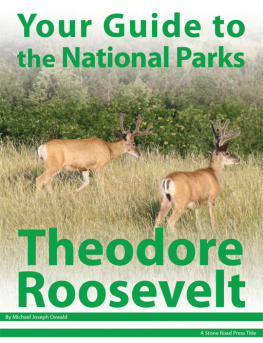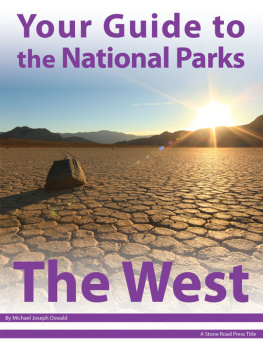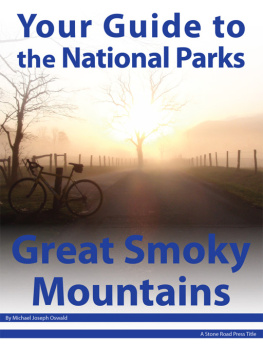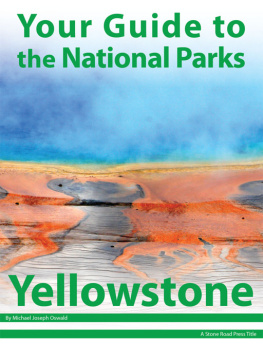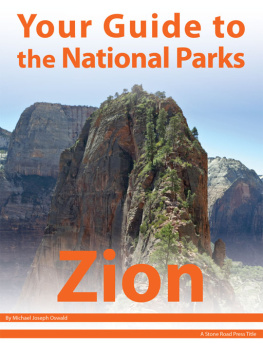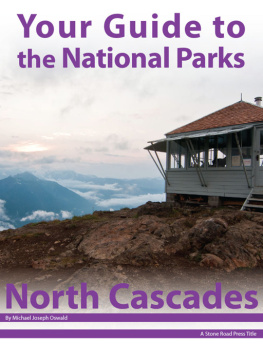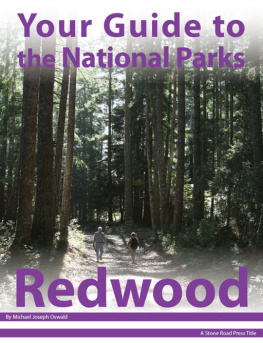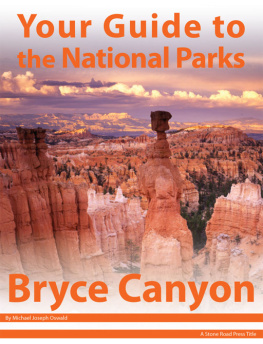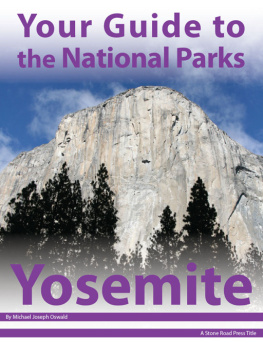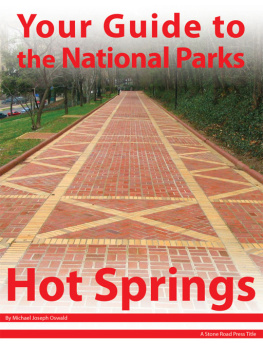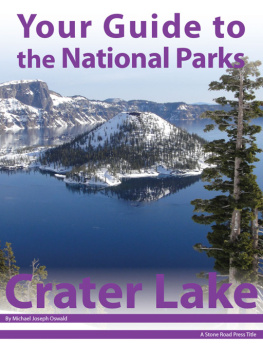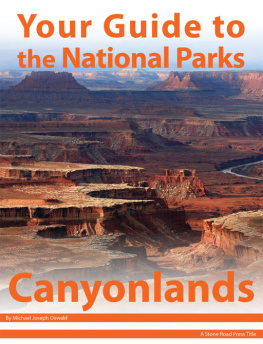Your Guide to Theodore Roosevelt National Park, First Edition (electronic)
ISBN: 978-1-62128-014-9
Published by: Stone Road Press
Author/Cartographer/Photographer/Designer: Michael Joseph Oswald
Editor: Derek Pankratz
Copyright 2012 Stone Road Press, LLC, Whitelaw, Wisconsin. All rights reserved. No part of this publication may be reproduced, stored in a retrieval system or transmitted in any form or by any means, electronic, mechanical, photocopying, recording, scanning or otherwise without written permission of the Publisher. Requests for permission should be addressed to Stone Road Press; c/o Michael Oswald; 4927 Stone Road; Whitelaw, WI 54247.
The entire work, Your Guide to the National Parks is available in paperback and electronic versions. Content that appears in print may not be available electronically.
Paperback ISBN: 978-1-62128-000-2
Library of Congress Control Number (LCCN): 2012934277
Printed in the United States of America
E-Book ISBN: 978-1-62128-0 65-1
Corrections/Contact
This guide book has been researched and written with the greatest attention to detail in order to provide you with the most accurate and pertinent information. Unfortunately, travel informationespecially pricingis subject to change and inadvertent errors and omissions do occur. Should you encounter a change, error, or omission while using this guide book, wed like to hear about it. (If you found a wonderful place, trail, or activity not mentioned, wed love to hear about that too.) Please contact us by sending an e-mail to . Your contributions will help make future editions better than the last.
You can contact us online at www.StoneRoadPress.com or follow us on
Facebook: www.facebook.com/thestoneroadpress
Twitter: www.twitter.com/stoneroadpress (@stoneroadpress)
Flickr: www.flickr.com/photos/stoneroadpress
FAQs
The world of electronic media is not cut and dry like print. Devices handle files differently. Users have a variety of expectations. These e-books are image- and map-intensive, requiring fairly powerful hardware. All books were tested for use on the Kindle Fire, Nook Tablet, and iPad. You can expect to have the best user experience on one of these devices, or a similar tablet, laptop, or desktop. In the event you have issues please peruse our Frequently Asked Questions (.
Maps
Numerous map layouts were explored while developing this e-book, but in the end it was decided that the most useful map is a complete one. Unfortunately, due to file size concerns and e-reader hardware limitations, some maps included in this guide book are below our usual high standards of quality (even using zoom features). As a workaround all of this books maps are available in pdf format by clicking the link below each map or visiting www.stoneroadpress.com/national-parks/maps .
Disclaimer
Your safety is important to us. If any activity is beyond your ability or threatened by forces outside your control, do not attempt it. The maps in this book, although accurate and to scale, are not intended for hiking. Serious hikers should purchase a detailed, waterproof, topographical map. It is also suggested that you write or call in advance to confirm information when it matters most.
The primary purpose of this guide book is to enhance our readers national park experiences, but the author, editor, and publisher cannot be held responsible for any experiences while traveling.
Theodore Roosevelt - Introduction

The Little Missouri River as seen from South Units Wind Canyon Overlook
Cliffs, gullies, and badlands formations of Theodore Roosevelt National Park are as rugged and relentless as its namesake. September of 1883, Theodore Roosevelt arrived in the town of Little Missouri a bespectacled, affluent New York City kid. Time spent in the Dakota badlands influenced him so deeply that he later wrote, I would not have been President if it had not been for my experiences in North Dakota. Roosevelt came to bag a buffalo , but he would do much more than hunt. Romanced by the Wests lawless lifestyle and potential for economic success, Roosevelt bought into the booming cattle industry, purchasing Maltese Cross Ranch for $14,000. The one-and-a-half story cabin with wooden floors and separate rooms was, to locals, a mansion. Today, it is preserved at the parks South Unit.
Roosevelt returned to New York, where tragedy struck on February 14, 1884. Just hours apart, Theodores mother and wife passed away. Stricken by grief, all Roosevelt could write in his diary was a large X and one sentence: The light has gone out in my life. Searching for solace, he returned to Maltese Cross Ranch. However, the ranchs location on a busy carriage road near the train station lacked the sort of solitude he desired for thought and reflection, prompting him to establish Elkhorn Ranch .
Roosevelts days as a ranchman were short-lived. Nearly 60 percent of his cattle froze or starved to death during the winter of 1886 87. (His livestocks fate was better than most; nearly 80 percent of the areas cattle died that year.) Within two years, the small meat-packing town of Medora turned into a ghost town. Roosevelt closed Elkhorn Ranch, and in 1898 sold his remaining cattle interests. Today, Elkhorn Ranch is a part of the park. The structures materials have been scavenged, leaving nothing more than sections of foundation. Interpretive panels provide insight into Roosevelts domain that once stood proudly above the banks of the Little Missouri.
Roosevelt may have left Elkhorn Ranch as a failure in cattle business, but he returned to New York a hardened ranchman with newfound appreciation of wilderness and the strenuous life of a frontiersman. He is often referred to as Americas Conservationist President, earning this title by preserving and protecting an estimated 230 million acres of land of ecological and scenic value.
Through efforts of the National Park Service visitors can experience North Dakotas badlands just as Theodore Roosevelt did (except while driving in cars rather than riding on horseback). Bison (or buffalo), pronghorn, and elk have been reintroduced after being overhunted. Artifacts from Roosevelts time are on display, including rifles and ranch clothing. Period pieces and several of Roosevelts personal effects, including a traveling trunk, remain in Maltese Cross Cabin, which can be toured with a park ranger. For all he has done for future generations of America and the welfare of the nations irreplaceable resources, it is fitting that the land that helped mold such an extraordinary man now bears his name.
Driving (THRO)
Driving is the most popular activity. South Unit visitors circle the park via 36-mile Scenic Loop Drive , stopping at pullouts to read interpretive signs and soak in the views. It begins just beyond East River Road and provides access to many of the South Units hiking trails and Peaceful Valley Ranch . Drive slowly to spot bison, pronghorn, elk, and wild horses. The residents you cant miss are the playful prairie dogs who scurry about their little prairie dog towns.
The North Unit offers a 14-mile (one-way) Scenic Drive that ends at Oxbow Overlook where youll find outstanding panoramic views. As you make your way, watch for wildlife. Mule deer are frequently seen crossing the upper grasslands. Witness the power of erosion at Cannonball Concretions Pullout . Eye the main agent of erosion, the Little Missouri River, from River Bend and Oxbow Overlooks .
Best of Theodore Roosevelt
Hike (South Unit): Painted Canyon
Runner-up: Wind Canyon
2nd Runner-up: Talkington
Hike (North Unit): Sperati
Runner-up: Caprock Coulee
Next page
